Abstract
In an effort to gather information on the potential genetic hazards of existing or proposed energy-generating or -conversion systems, we have begun a correlated analytical and genetic analysis of a number of technologies. The work is divided into two phases: one deals with known compounds expected to occur in the environment through energy production, conversion, or use; the other deals with actual samples from existing or experimental processes. To approach the problems of coping with and testing large numbers of compounds, we set up a form of the “tier system.” Operating units utilizing Salmonella, Escherichia coli, yeast, human leukocytes, mammalian cells, and Drosophila have been initiated. Various liquid-liquid extraction methods and column chromatographic separations have been applied to crude products and effluents from oil-shale, coal-liquefaction, and coal-gasification processes. Mutagenicity of the various fractions is assayed by means of reversion of histidine-requiring auxotrophs of Salmonella typhimurium; comparative studies are carried out with the other genetic systems. In order to incorporate metabolic activation of these fractions and compounds, rat liver homogenates (S-9) are used in the various assays. Results implicate chemicals occurring in the basic (ether-soluble) and the neutral fractions as potential genetic hazards. Chemical constituents of these fractions (identified or predicted) were tested individually for their mutagenic activity.
Full text
PDF
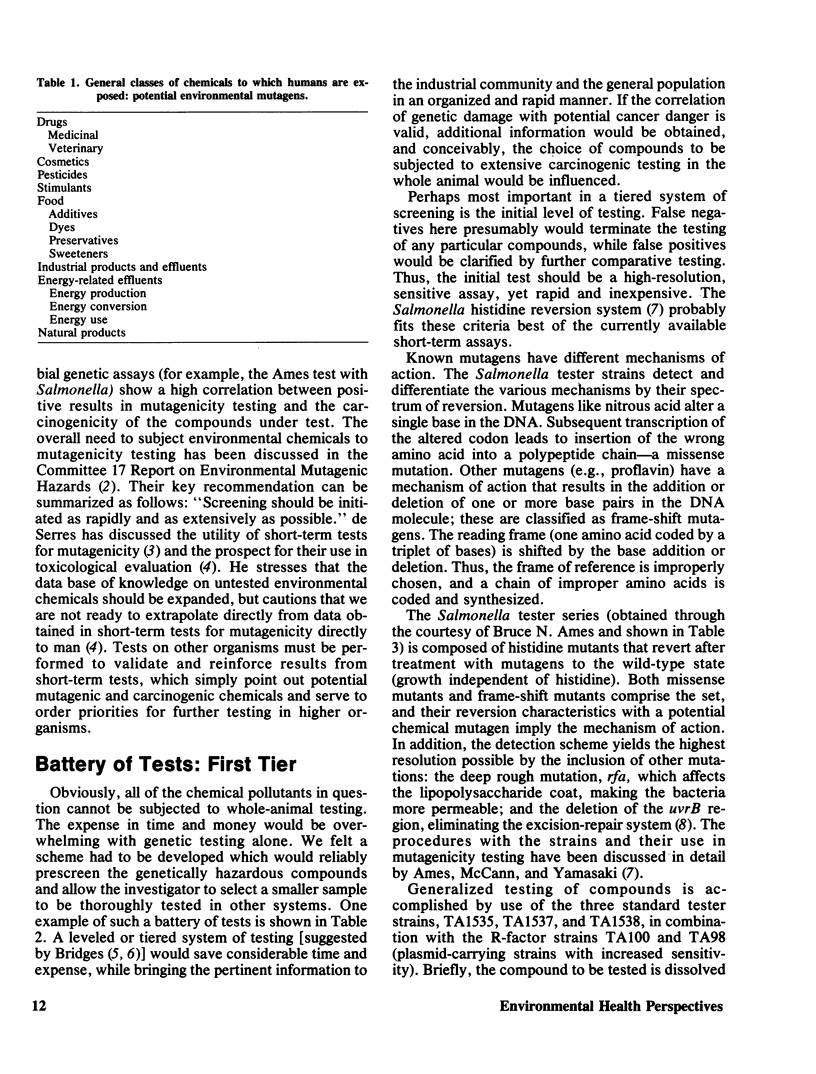
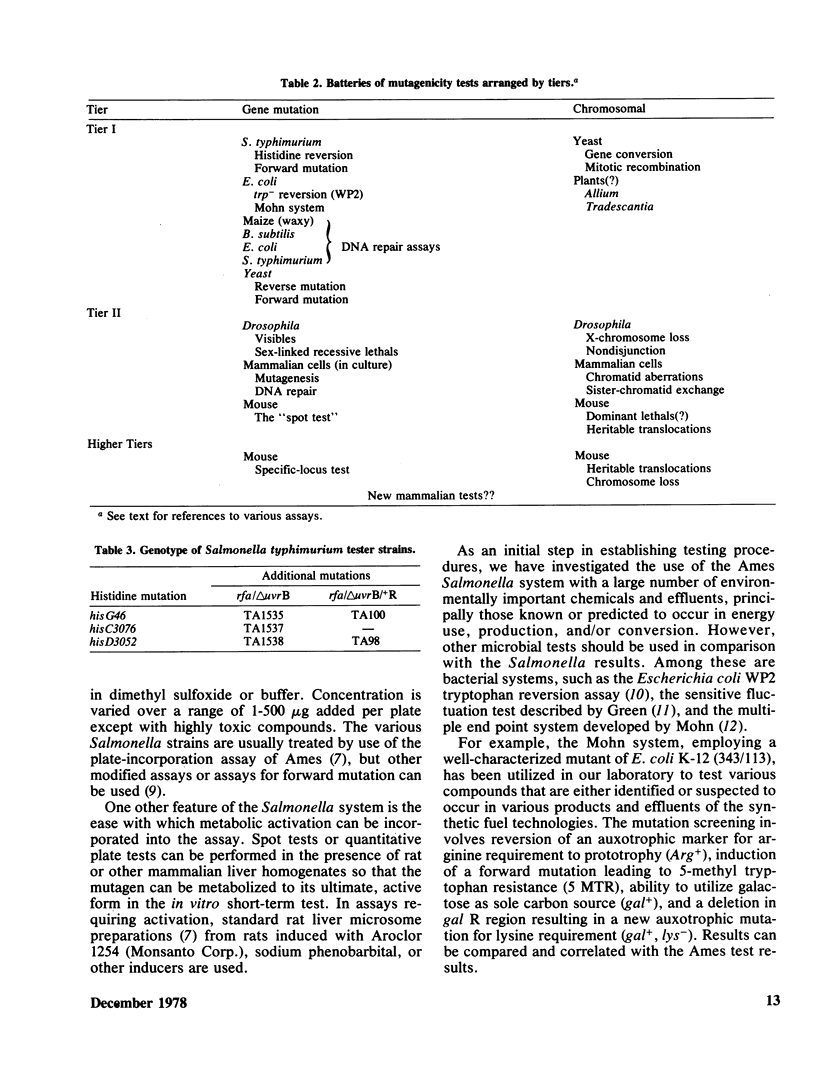
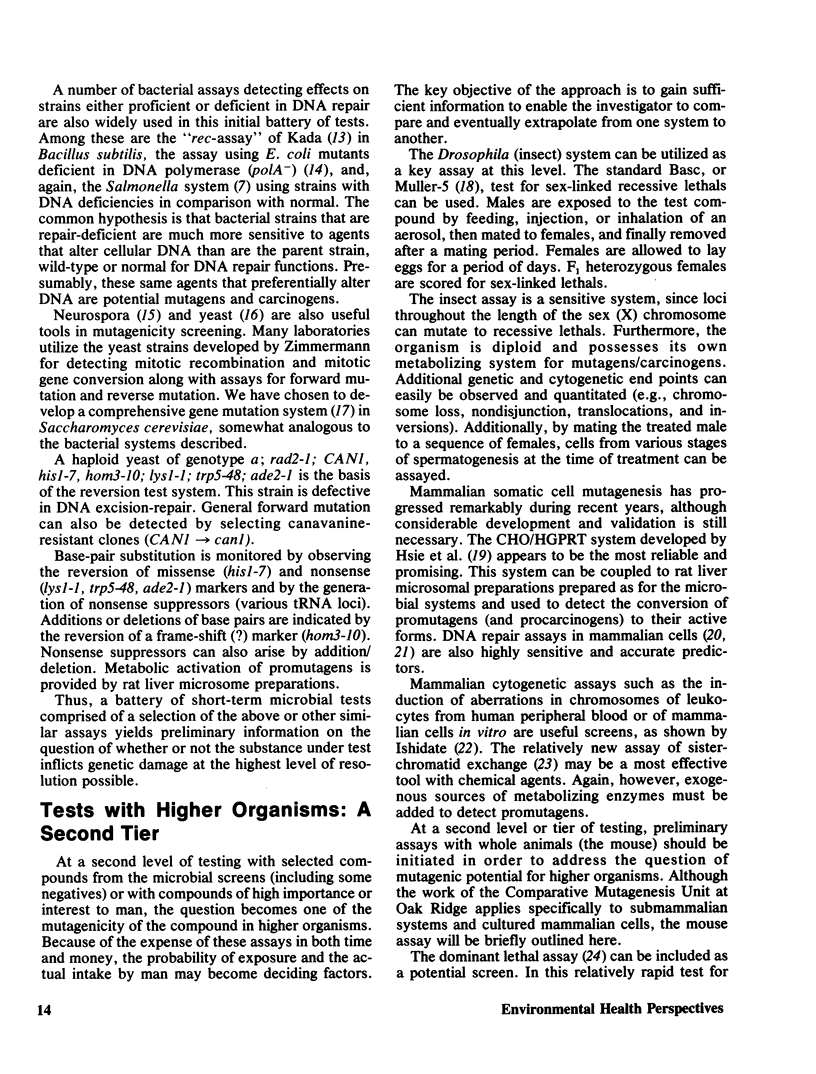
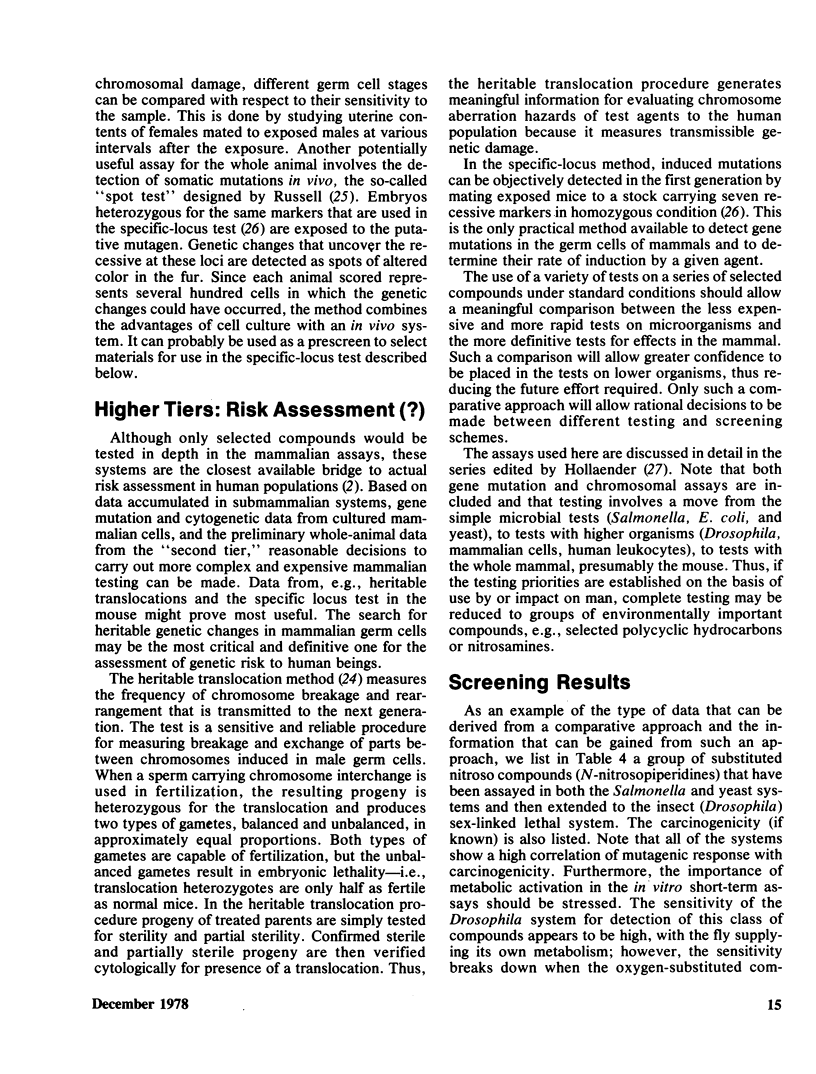
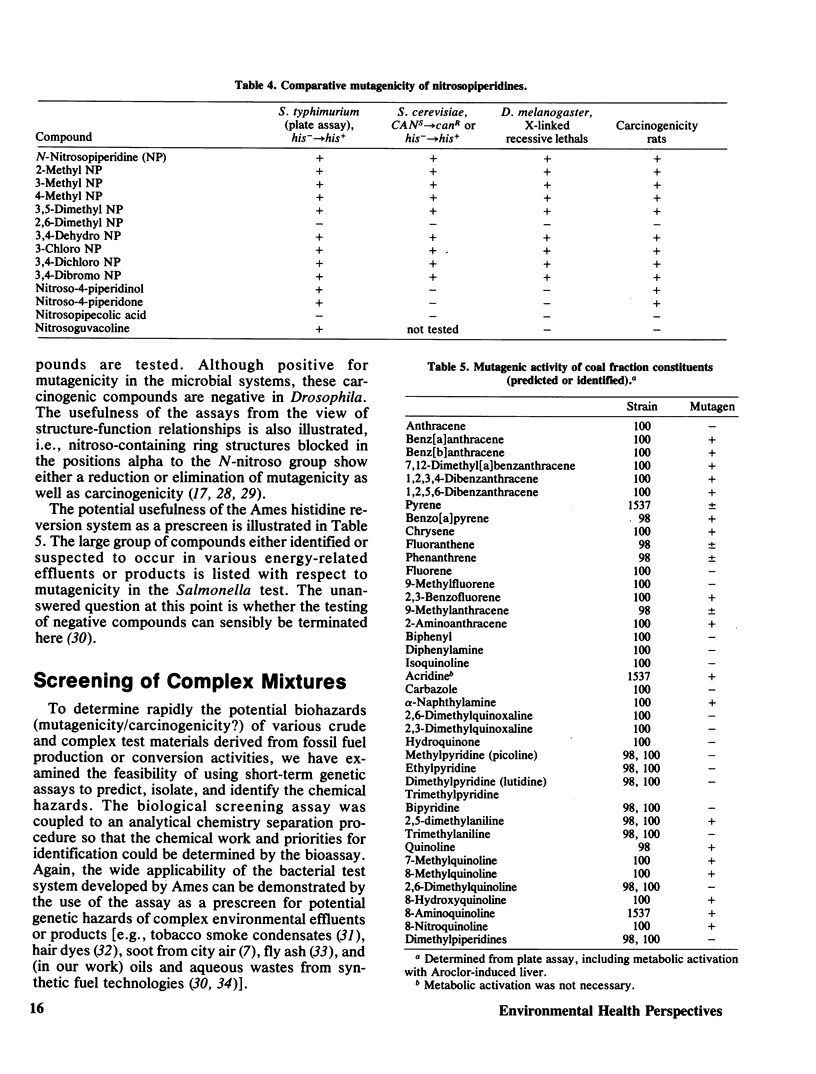
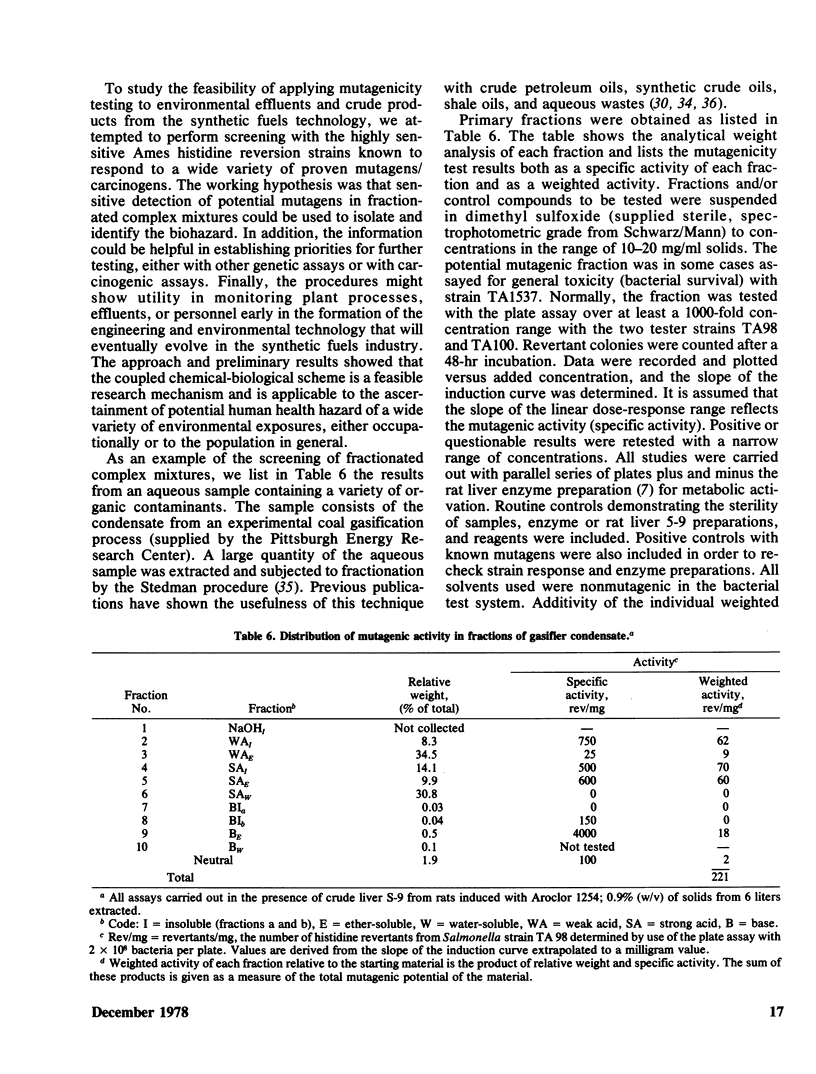
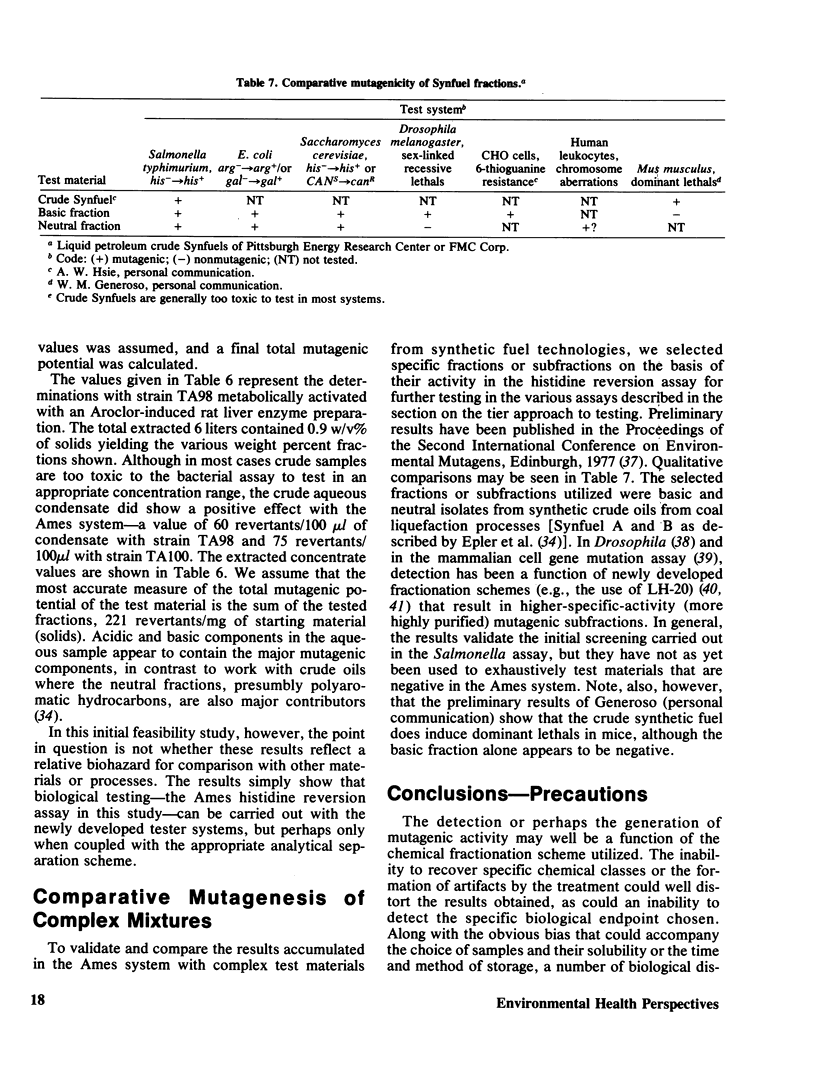
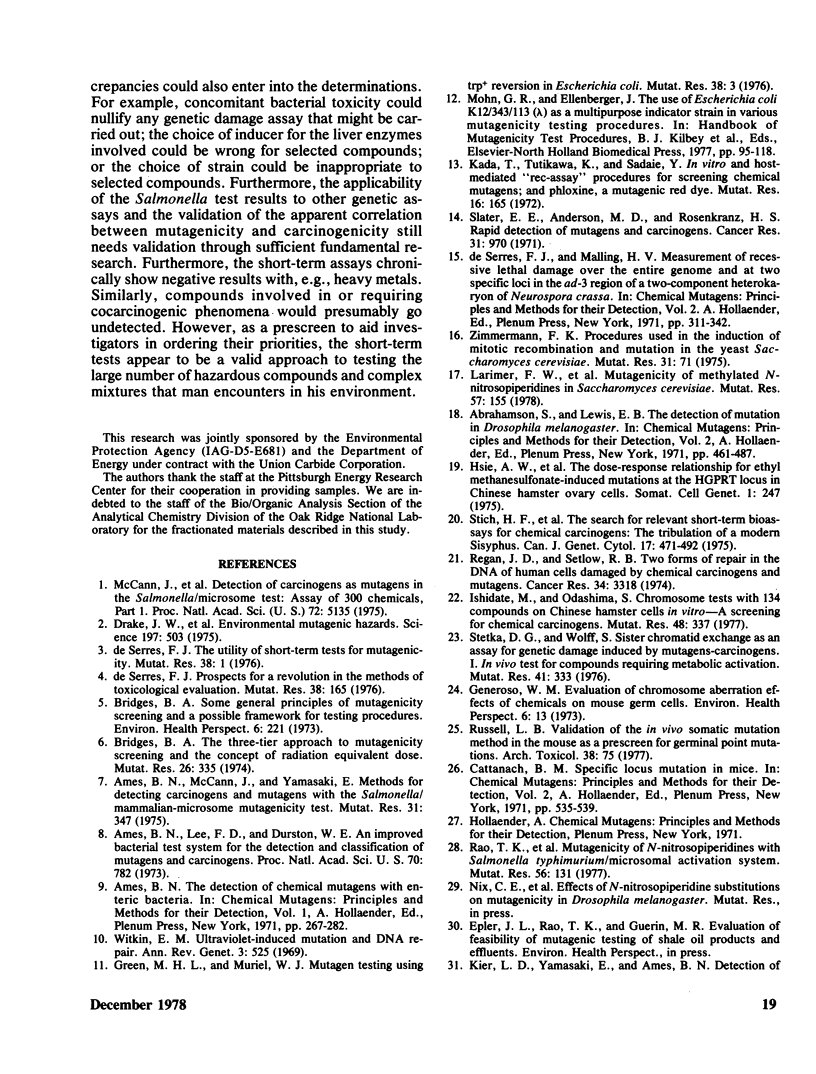
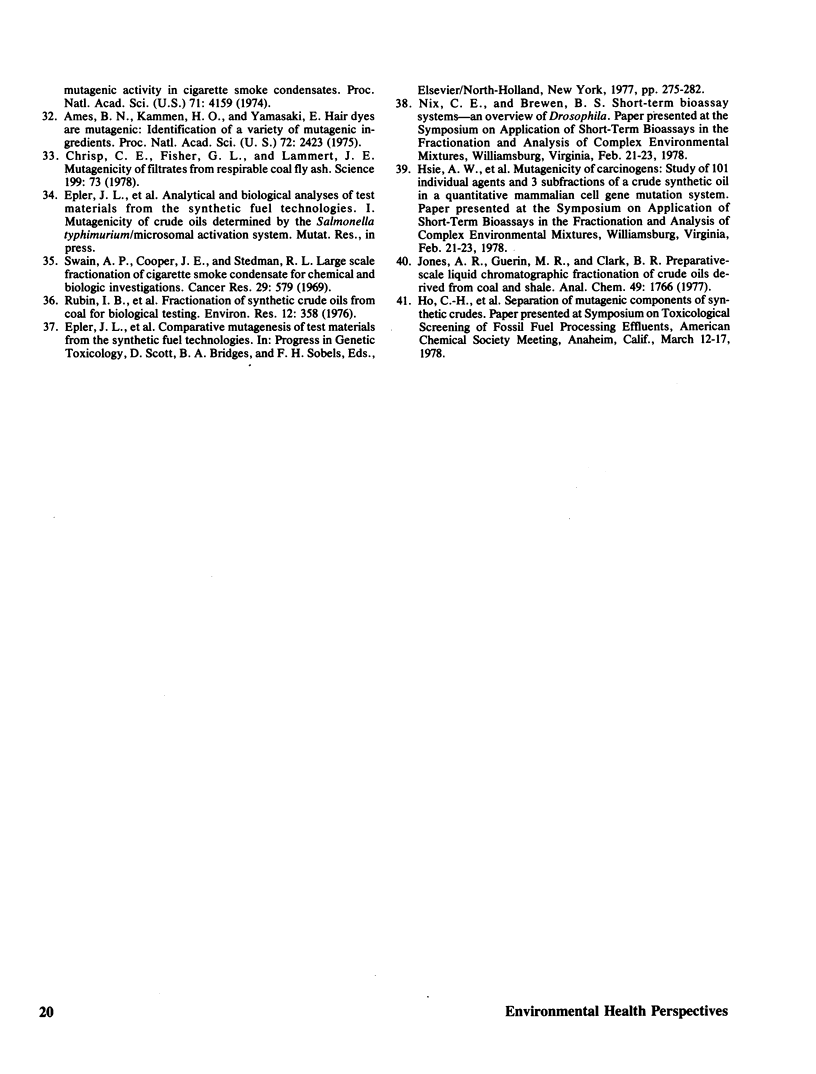
Selected References
These references are in PubMed. This may not be the complete list of references from this article.
- Ames B. N., Kammen H. O., Yamasaki E. Hair dyes are mutagenic: identification of a variety of mutagenic ingredients. Proc Natl Acad Sci U S A. 1975 Jun;72(6):2423–2427. doi: 10.1073/pnas.72.6.2423. [DOI] [PMC free article] [PubMed] [Google Scholar]
- Ames B. N., Lee F. D., Durston W. E. An improved bacterial test system for the detection and classification of mutagens and carcinogens. Proc Natl Acad Sci U S A. 1973 Mar;70(3):782–786. doi: 10.1073/pnas.70.3.782. [DOI] [PMC free article] [PubMed] [Google Scholar]
- Ames B. N., Mccann J., Yamasaki E. Methods for detecting carcinogens and mutagens with the Salmonella/mammalian-microsome mutagenicity test. Mutat Res. 1975 Dec;31(6):347–364. doi: 10.1016/0165-1161(75)90046-1. [DOI] [PubMed] [Google Scholar]
- Bridges B. A. Some general principles of mutagenicity screening and a possible framework for testing procedures. Environ Health Perspect. 1973 Dec;6:221–227. doi: 10.1289/ehp.7306221. [DOI] [PMC free article] [PubMed] [Google Scholar]
- Bridges B. A. The three-tier approach to mutagenicity screening and the concept of radiation-equivalent dose. Mutat Res. 1974 Aug;26(4):335–340. doi: 10.1016/s0027-5107(74)80031-x. [DOI] [PubMed] [Google Scholar]
- Chrisp C. E., Fisher G. L., Lammert J. E. Mutagenicity of filtrates from respirable coal fly ash. Science. 1978 Jan 6;199(4324):73–75. doi: 10.1126/science.199.4324.73. [DOI] [PubMed] [Google Scholar]
- De Serres F. J. The utility of short-term tests for mutagenicity. Mutat Res. 1976 Feb;38(1):1–2. doi: 10.1016/0165-1161(76)90075-3. [DOI] [PubMed] [Google Scholar]
- Generoso W. M. Evaluation of chromosome aberration effects of chemicals on mouse germ cells. Environ Health Perspect. 1973 Dec;6:13–22. doi: 10.1289/ehp.730613. [DOI] [PMC free article] [PubMed] [Google Scholar]
- Green M. H., Muriel W. J. Mutagen testing using TRP+ reversion in Escherichia coli. Mutat Res. 1976 Feb;38(1):3–32. doi: 10.1016/0165-1161(76)90076-5. [DOI] [PubMed] [Google Scholar]
- Hsie A. W., Brimer P. A., Mitchell T. J., Gosslee D. G. The dose-response relationship for ethyl methanesulfonate-induced mutations at the hypoxanthine-guanine phosphoribosyl transferase locus in Chinese hamster ovary cells. Somatic Cell Genet. 1975 Jul;1(3):247–261. doi: 10.1007/BF01538449. [DOI] [PubMed] [Google Scholar]
- Ishidate M., Jr, Odashima S. Chromosome tests with 134 compounds on Chinese hamster cells in vitro--a screening for chemical carcinogens. Mutat Res. 1977 Jul;48(3-4):337–353. doi: 10.1016/0027-5107(77)90177-4. [DOI] [PubMed] [Google Scholar]
- Kada T., Tutikawa K., Sadaie Y. In vitro and host-mediated "rec-assay" procedures for screening chemical mutagens; and phloxine, a mutagenic red dye detected. Mutat Res. 1972 Oct;16(2):165–174. doi: 10.1016/0027-5107(72)90177-7. [DOI] [PubMed] [Google Scholar]
- Larimer F. W., Ramey D. W., Lijinsky W., Epler J. L. Mutagenicity of methylated N-nitrosopiperidines in Saccharomyces cerevisiae. Mutat Res. 1978 May;57(2):155–161. doi: 10.1016/0027-5107(78)90262-2. [DOI] [PubMed] [Google Scholar]
- McCann J., Choi E., Yamasaki E., Ames B. N. Detection of carcinogens as mutagens in the Salmonella/microsome test: assay of 300 chemicals. Proc Natl Acad Sci U S A. 1975 Dec;72(12):5135–5139. doi: 10.1073/pnas.72.12.5135. [DOI] [PMC free article] [PubMed] [Google Scholar]
- Regan J. D., Setlow R. B. Two forms of repair in the DNA of human cells damaged by chemical carcinogens and mutagens. Cancer Res. 1974 Dec;34(12):3318–3325. [PubMed] [Google Scholar]
- Rubin I. B., Guerin M. R. Fractionation of synthetic crude oils from coal for biological testing. Environ Res. 1976 Dec;12(3):358–365. doi: 10.1016/0013-9351(76)90046-3. [DOI] [PubMed] [Google Scholar]
- Russell L. B. Validation of the in vivo somatic mutation method in the mouse as a prescreen for germinal point mutations. Arch Toxicol. 1977 Sep 21;38(1-2):75–85. doi: 10.1007/BF00293665. [DOI] [PubMed] [Google Scholar]
- Slater E. E., Anderson M. D., Rosenkranz H. S. Rapid detection of mutagens and carcinogens. Cancer Res. 1971 Jul;31(7):970–973. [PubMed] [Google Scholar]
- Stetka D. G., Wolff S. Sister chromatid exchange as an assay for genetic damage induced by mutagen-carcinogens. I. In vivo test for compounds requiring metabolic activation. Mutat Res. 1976 Dec;41(2-3):333–342. doi: 10.1016/0027-5107(76)90106-8. [DOI] [PubMed] [Google Scholar]
- Stich H. F., Lam P., Lo L. W., Koropatnick D. J., San R. H. The search for relevant short term bioassays for chemical carcinogens: the tribulation of a modern Sisyphus. Can J Genet Cytol. 1975 Dec;17(4):471–491. doi: 10.1139/g75-062. [DOI] [PubMed] [Google Scholar]
- Swain A. P., Cooper J. E., Stedman R. L. Large-scale fractionation of cigarette smoke condensate for chemical and biologic investigations. Cancer Res. 1969 Mar;29(3):579–583. [PubMed] [Google Scholar]
- Zimmermann F. K. Procedures used in the induction of mitotic recombination and mutation in the yeast Saccharomyces cerevisiae. Mutat Res. 1975 Apr;31(2):71–86. doi: 10.1016/0165-1161(75)90069-2. [DOI] [PubMed] [Google Scholar]
- de Serres F. J. Prospects for a revolution in the methods of toxicological evaluation. Mutat Res. 1976 Jun;38(3):165–176. doi: 10.1016/0165-1161(76)90188-6. [DOI] [PubMed] [Google Scholar]


